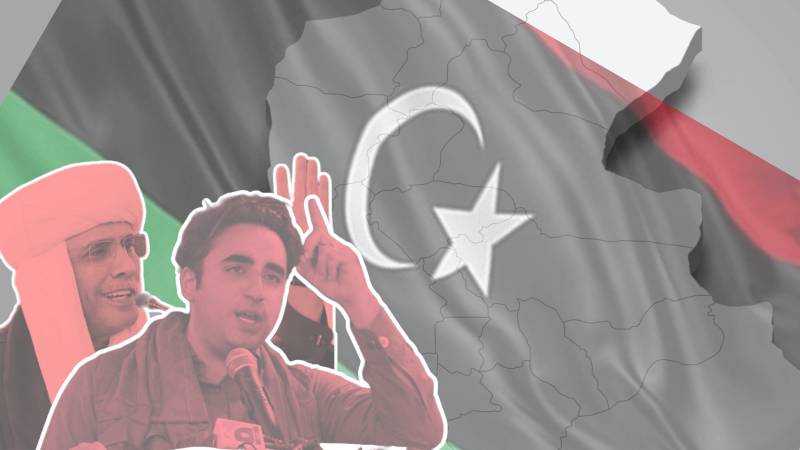
The Pakistan Peoples Party (PPP) has won a successive fourth election in Sindh, winning a whopping 84 out of the 130 general seats in the Sindh Assembly. In doing so, it has not only increased its popular vote by more than seven percent, but has also managed to get the lion's share of the total votes cast in the province. PPP got 45.88% of the total votes polled in the province on February 8, ensuring it retained control of the provincial government, a record extending to 2008. The PPP has also steadily increased the number of seats it has secured in the provincial assembly over the past two elections.
As elsewhere in the country, there was a shadow of rigging and manipulation of results hanging over Sindh. While the allegations of rigging in urban Sindh are substantive, the same cannot be said for results from rural Sindh, where the ruling party did not face any opposition on the ground and most of its candidates won by substantive margins.
Last Friday, the Grand Democratic Alliance (GDA) — a conglomerate of opposition parties — staged a protest at Jamshoro in Sindh against the alleged rigging. The GDA was formed before the 2013 general elections to unite opposition parties under a single banner to fight the PPP in rural areas of Sindh. It included political heavyweights from different areas of Sindh, such as Pir Pagaro, the Jatois of Naushehro Feroze and the Mirzas from Badin. It also attracted nationalist parties such as the Sindh Taraqi Pasand Party, Sindh United Party, Ayaz Latif Palijo's Qaumi Awami Tehreek, Mumtaz Bhutto's Sindh National Front and a few others. This grand coalition failed in its very first assignment in 2018 when it only managed to secure 15.11% of the popular vote, translating into only 11 provincial assembly seats.
The coalition's performance in the recent elections is even more abysmal, winning only two seats in the provincial assembly. Blaming this failure and PPP's success on rigging alone is the simplest way for the opposition parties to avoid political responsibility.
Umair Javed, a teacher who writes for Dawn, attributes PPP's electoral success to the continued relevance of a brand of politics that provides space for provincial rights and cultural/ ethnic assertion. On the other hand, the PPP claims it to be a testimony of their performance and governance in Sindh. What we need is a comprehensive understanding of the mode of politics that PPP employs in Sindh. It is a classic case of patronage politics and winning allegiances of diverse groups by offering a host of incentives.
Asif Ali Zardari, the party's co-chairman, has successfully consolidated the party at the district level. Look at the list of 191 candidates nominated by the PPP on all the provincial and national assembly seats in Sindh for the 2024 general elections. You will find that it contains many names who have competed and won against PPP candidates in the past two elections, whether the Mahars of Ghotki and Shikarpur or the Sherazis of Thatta. There can be multiple opinions on what motivated these candidates and families to join the PPP; some would argue that they were coerced into joining the PPP, while some would say that they were fed up with being in opposition for over a decade and could not take it anymore. Whatever one may say, the reality is that they are now part of the PPP and part of the government.
Zardari's politics and the non-seriousness of opposition parties have turned Sindh into an impregnable political fortress for the PPP. Electoral and constituency politics is a full-time job, at least in rural areas. Voters expect their representatives to be available and accessible and be a part of their everyday lives. PPP's candidates are mostly accessible and, as part of the government, can participate in the traditional 'Thana-Kutcheri' politics.
On the other hand, major stakeholders of the GDA comprise traditional, feudal families for whom politics appears to be a recreational activity to be repeated once every five years. This creates a gap between them and their voters. The PPP successfully caught on to that and transformed it into a consistent increase in PPP's popular vote from 32.86% in 2013 to 38.44% in 2018, and now, pushing it to almost 46%, or almost half of the eligible voters.
These figures reflect that the PPP is the party of choice for voters in Sindh despite the allegations of governance issues and corruption. This is probably why the mantra of rigging by the opposition has not found many takers in Sindh. What they need is a comprehensive assessment and analysis of their mistakes and a broad-based strategy to engage with voters regularly. If they cannot do this, they will find themselves on the streets again after elections, raising slogans of rigging.

